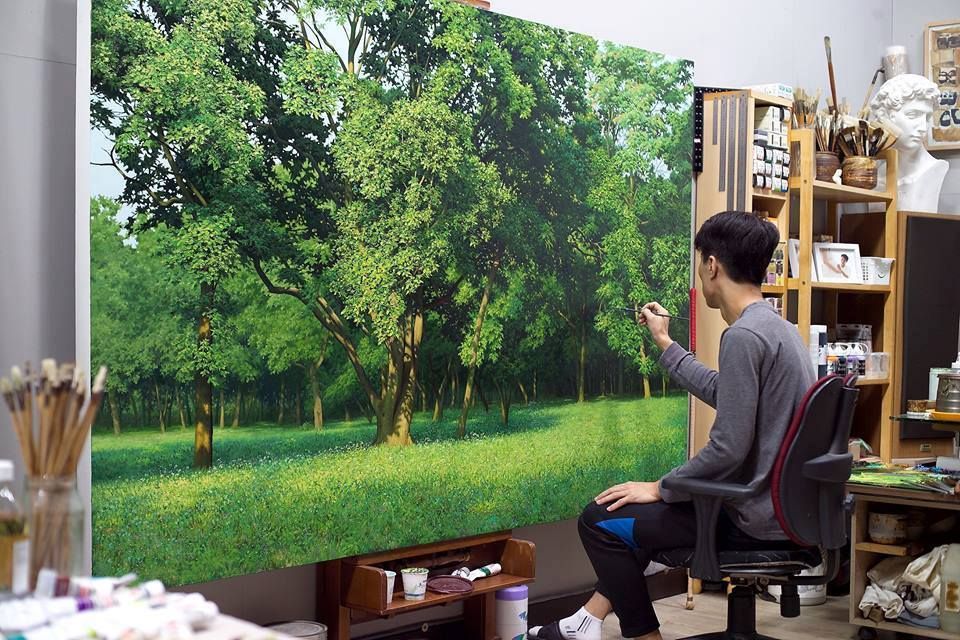Digital Art and NFTs: Shaping Art Culture in the 21st Century

Introduction
Digital Art and NFTs: Shaping Art Culture in the 21st Century The evolution of technology has significantly impacted the way we create, appreciate, and trade art. In recent years, the art world has witnessed a revolutionary shift with the rise of Digital Art and Non-Fungible Tokens (NFTs). This transformative combination has redefined art boundaries, challenging conventional notions and creating creative avenues for artists and collectors alike. In this article, we will delve into the fascinating realm of Digital Art and NFTs. We will explore their origins, impact on art culture, and future in the 21st Century.
Digital Art: Redefining Creativity
Digital art encompasses a wide range of artistic expressions created using digital technology. Artists can paint, draw, sculpt, and manipulate images entirely within the electronic realm, transcending physical medium limitations. This newfound freedom has given rise to innovative techniques, pushing creativity boundaries and enabling artists to explore uncharted territories. Moreover, digital platforms have democratized art creation, allowing aspiring artists to experiment and showcase their work to a global audience. This is without expensive materials or studio spaces.
NFTs: The Blockchain Revolution
Non-fungible Tokens (NFTs) are independent digital assets verified using blockchain technology. Unlike cryptocurrencies such as Bitcoin or Ethereum, which are fungible and interchangeable, NFTs are distinct and cannot be replicated. Each NFT contains metadata that certifies its authenticity, provenance, and ownership, making it a powerful tool for electronic artists. By tokenizing their creations, artists can establish ownership, ensure scarcity, and receive royalties whenever their work is sold on the secondary market. This paradigm shift has transformed how artists monetize their digital creations, empowering them in ways previously unimaginable.
The intersection of digital art and NFTs
The synergy between Digital Art and NFTs has created a new ecosystem where artists can tokenize their digital creations. This creates an exclusive electronic asset that can be bought, sold, and traded like a traditional artwork. This intersection has sparked a global phenomenon, with artists, collectors, and investors flocking to online marketplaces to participate in this art revolution. Notable artists have embraced this trend, producing exclusive NFT collections that fetch staggering prices at auctions. This has challenged art valuation in the digital age.
Challenges and Criticisms
While digital art and NFTs offer unprecedented opportunities, they come with challenges and criticisms. Environmental concerns about blockchain technology’s energy-intensive nature have sparked debates about NFT sustainability. Additionally, copyright infringement, plagiarism, and the potential bubble in the NFT market have raised valid concerns within the art community. Addressing these challenges is crucial to ensuring the sustainable growth of Digital Art and NFTs while protecting artists and collectors’ rights.
The Future of Digital Art and NFTs
Looking ahead, the future of Digital Art and NFTs appears promising and multifaceted. Technological advancements, such as augmented reality (AR) and virtual reality (VR), will further enhance digital art’s immersive experience, blurring the lines between the virtual and physical worlds. Moreover, collaborations between artists, musicians, and other creators within the NFT space are expected to lead to innovative multimedia projects, pushing artistic boundaries. As technology matures and becomes more accessible, we can anticipate a more inclusive and diverse art ecosystem. This is where artists from various backgrounds can thrive and connect with a global audience.
Conclusion
Digital art and NFTs have ushered in an exciting era in the art world, shaping the 21st-century art culture. The fusion of creativity and blockchain technology has opened doors for artists, collectors, and enthusiasts. This has democratized art and redefined ownership in the digital age. While challenges persist, the potential for innovation and growth in this space is limitless. As society continues to embrace digitalization, the impact of Digital Art and NFTs on art culture will undoubtedly be a defining chapter in artistic history.

Leave a Comment